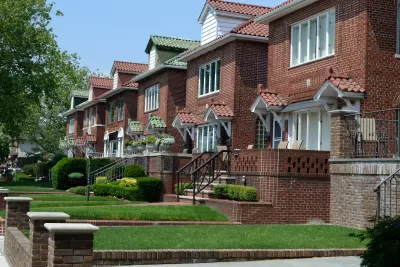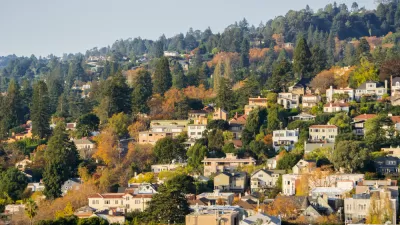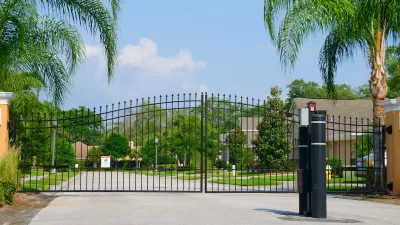The Trump administration’s talk about protecting the suburbs is based on misrepresentations of who really lives in suburbs and what these communities need.

"Given the scale of American suburbia, talking about 'the suburbs' writ large invariably papers over the differences that exist across this spectrum of communities, which range in population (from fewer than 100 residents to hundreds of thousands), location (from streetcar suburbs to exurbs), and built environment (from strip malls and subdivisions to dense, walkable downtowns)," writes Elizabeth Kneebone.
In addition, suburbs are diverse in terms of income, race, and ethnicity, but this does not mean all suburbs are equal. Exclusionary zoning and land use regulations have resulted in significant inequities. “These practices have allowed certain jurisdictions and neighborhoods to hoard wealth and opportunity, fueling racial and economic segregation and creating disparities not only between suburbs and cities but also within suburbia as well,” Kneebone.
In addition, the kind of suburbs touted by President Trump and Ben Carson—filled with single-family homes and with high average household incomes and low poverty rates—make up just one-fifth of suburban neighborhoods.
"Trump and Carson denigrate 'urban cities' by writing that they often struggle to 'provide for their citizens’ basic needs in housing, public safety and education'—but that is also the reality for many small, resource-strapped suburbs scattered across the fragmented patchwork of suburban America," says Kneebone.
They should instead, she argues, focus on policies and programs that will help people living in suburbs. Rent relief, tenant protections, and federal aid to states and cities are what is needed to bolster the suburbs that Trump and Carson allegedly want to save.
FULL STORY: Trump is clinging to an outdated vision of America’s suburbs

Americans May Be Stuck — But Why?
Americans are moving a lot less than they once did, and that is a problem. While Yoni Applebaum, in his highly-publicized article Stuck, gets the reasons badly wrong, it's still important to ask: why are we moving so much less than before?

Using Old Oil and Gas Wells for Green Energy Storage
Penn State researchers have found that repurposing abandoned oil and gas wells for geothermal-assisted compressed-air energy storage can boost efficiency, reduce environmental risks, and support clean energy and job transitions.

Placekeeping: Setting a New Precedent for City Planners
How a preservation-based approach to redevelopment and urban design can prevent displacement and honor legacy communities.

San Francisco’s Muni Ridership Grew in 2024
The system saw its highest ridership since before the Covid-19 pandemic, but faces a severe budget shortage in the coming year.

Colorado Lawmakers Move to Protect BRT Funding
In the face of potential federal funding cuts, CDOT leaders reasserted their commitment to planned bus rapid transit projects.

Safe Streets Funding in Jeopardy
The Trump administration is specifically targeting bike infrastructure and other road safety projects in its funding cuts.
Urban Design for Planners 1: Software Tools
This six-course series explores essential urban design concepts using open source software and equips planners with the tools they need to participate fully in the urban design process.
Planning for Universal Design
Learn the tools for implementing Universal Design in planning regulations.
Heyer Gruel & Associates PA
City of Moreno Valley
Institute for Housing and Urban Development Studies (IHS)
City of Grandview
Harvard GSD Executive Education
Salt Lake City
NYU Wagner Graduate School of Public Service
City of Cambridge, Maryland





























